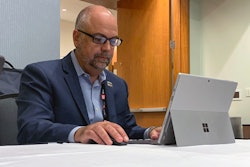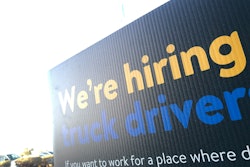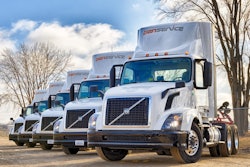When I was in high school in the 1970s I would bet money today my initial thoughts on stereotypes included Panasonic, Sony, Technics, Bang & Olufson Blaupunkt.
Going to college I had the fortune to join the student chapter of ASME and work with an amazing mix of ethnicities, genders and nationalities. I had grown up reading mountains of discarded Aviation Week and Space Technology magazines, courtesy of an academic neighbor.
I had seen countless pictures of male NASA space program engineers sporting the corporate uniform of white shirts, ties, and, yes, the enviable pocket protectors, usually at control terminals or bent over fields of drafting tables each with its coveted mechanical drafting arm. So going to college I was amazed. Not only were women pursuing engineering careers, but also they were impressive student leaders.
I landed a summer coop job as a civilian engineer working at a Navy engineering facility in Washington state. Fortune had it that I was assigned to the sole female lead engineer at the site, a woman in her late 40’s. I didn’t think twice about it then, but ever since, I have pondered just how hard a road she had traveled to get there in the male dominated industry of the 1960s and 1970s. I have also thanked karma for giving me that first real exposure to diversity.
After graduation, I went to work for Lockheed, a major aerospace company that was desperately staffing up engineers from colleges to fill a void in hiring from 1970s layoffs due to cancellation of programs. They had just landed a massive contract for new missiles, with aggressive schedules for fleet deployment. They did not have time or patience for bias in hiring. If you had good potential, you were hired. Literally hundreds of engineers per month were hired and sped through orientation with three six-week rotations in different departments so both you and management could figure out where you best fit. Not unlike baseball farm teams.
I found out later that one of those women ASME student leaders from my university who had been hired few years before had got my resume in front of human resources. She was also not averse to hiring based on skills with no regard for my gender or race.
The shortage of middle managers meant star performers fast tracked up the management chain. Many women became supervisors and later group and department managers.
The forward thinkers at Lockheed were empowered by diversity. The Easter egg basket of new engineers was about as diverse as possible. They saw there were not enough would-be engineers entering colleges to sustain future needs. A group of volunteers proposed an outreach program aimed at fifth and sixth graders to promote STEM (science, technology, engineering and mathematics) careers while kids were still young enough to be receptive to challenging stereotypes. The group’s bigger subliminal goal was to put diversity front and center in grade school visits wrapped around hands-on demonstrations of fun science projects. I ended up running this group for a time. We didn’t force feed diversity. We demonstrated it. Call it shameless product placement. Like when you see a Pepsi or Coke can in the hands of your favorite actor in a movie. It works.
Later I went to work for Peterbilt — another traditionally white male dominated industry. I got to interact all over Paccar's international locations. Again, forward thinking senior managers hired for diversity and volunteers promoted it. Paccar and Peterbilt are great engineering firms that are walking the talk. One excellent example is the Peterbilt Women’s Initiative Network (PBWIN).
I have worked for and hired many people over my 40-year career. I never saw any of them as anything other than engineers or managers. Yes, I qualified them as good or poor, but it was based solely on their job performance. Engineering, math and science don’t really care what you look like.
NACFE has been a supporter of Women in Trucking for several years. My associate, Jessie Lund, is leading a panel at their November Accelerate Conference in Dallas. I’ve led panels and spoken at past events.
I have to say it was impressive in 2019 being one of perhaps 50 males at WIT Accelerate out of more than 1,100 truck industry attendees.
Equally impressive for me was seeing a huge number of women in all fleet roles from drivers to owners as NACFE interviewed 91 people this summer as part of Run on Less - Electric at 13 fleets across North America. You can see this clearly in more than 30 short videos we posted at runonless.com.
Just as impressive, I attended Partners for Automated Vehicle Education's (PAVE) recent virtual board meeting where a representative from each state group involved with promoting automated and connected vehicles had five minutes to say what they were accomplishing. And they are accomplishing a lot. But getting back to product placement, a noticeable proportion of these leaders were women.
As someone who started his working career at a facility with only one woman engineer, we have come a long, long way. Clearly though, there is still room to improve.
The downside of my recent experience was attending a diversity panel at a major industry show. Organizers slotted this for 7:30 a.m., as if checking a box. The room was sized for more than 200 attendees and maybe 10% were filled, mostly by women — of all ethnicities. Further compounding my disappointment was that one of the opening speakers explained that typical employment postings get mountains of applicants who are white males over the age of 55, as if those characteristics matter. I tried not to take offense as I am one of those. But if the argument about promoting diversity is about fighting stereotypes, you shouldn’t immediately follow that up with stereotyping a group.
I know first-hand many white male older executives and managers over the decades at Lockheed, NASA, DOE, the U.S. Navy, Paccar, Cummins, NACFE and more that helped enable those thousand-plus women who showed up to WIT and have helped break barriers. And I know many pioneering women in engineering that have paid their dues to get where they are. Many of them got their first jobs from someone willing to not be a stereotype.
Success for diversity will be if it is unnoticed in the future, just as none of us notice a really subtle product placement. Diversity will be there, and no one will notice that an employee is anything more or less than an employee.
Rick Mihelic is NACFE’s Director of Emerging Technologies. He has authored for NACFE four Guidance Reports on electric and alternative fuel medium- and heavy-duty trucks and several Confidence Reports on Determining Efficiency, Tractor and Trailer Aerodynamics, Two Truck Platooning, and authored special studies on Regional Haul, Defining Production and Intentional Pairing of tractor trailers.











